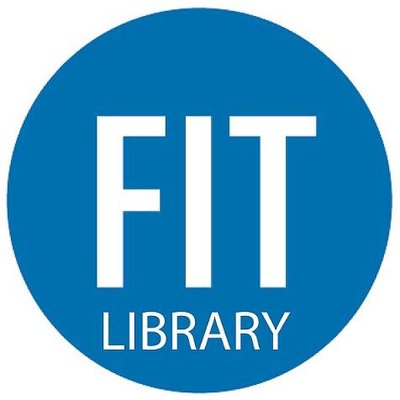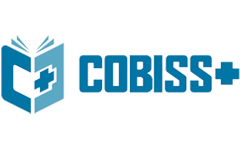Examining the Relationship between Legal, Political Environment and Freedom of Information in Indian Print Media
DOI:
https://doi.org/10.61841/ptz1wj84Keywords:
Freedom of Information, Journalism, Press Freedom, Legal environment, Political environmentAbstract
This study aims to understand the relationship between legal, political environment and freedom of information in Indian print media. While previous studies only focused on the media policies and regulations, no specific research has been done to track the freedom of information in print media in India. This study traces the freedom of information in print media by exploring and analyzing the relationship between the legal environment, political environment, and freedom of information. This study employs a deductive approach on data gathered from a survey conducted on Indian journalists. Descriptive and inferential statistics were used to analyze the data. The study found that the legal and political environment are significantly related to freedom of information in print media in India.
Downloads
References
1. Jenifer W., Woodring, D. and Van B. (2014). Historical guide to world media freedom: A country-by-country
analysis. Washington. CQ Press
2. Stefanick, L. 2014. Controlling Knowledge : Freedom of Information and privacy protection in a networked
world. Athabasca University Press
3. Schudson, M. 2003. The Sociology of News. New York : W.W. Norton & Company
4. Mattes, R., & Bratton, M. 2007. Learning about democracy in Africa: Awareness, performance and experience.
Political Science. 51(1): 192–217 doi:10.1111/j.1540-5907.2007.00245.x
5. Colonel, S. (2010). Corruption and the watchdog role of the news media. Public Sentinel : News media and
governance reform.
6. Chowdhury, S. K. 2004a. The effect of democracy and press freedom on corruption: An empirical test.
Economic Letters 85(1) 93–101. doi:10.1016/j.econlet.2004.03.024
7. Schmitt-Beck, R., & Voltmer, K. 2007. The mass media in third wave democracies: Grave diggers or seedsmen
of democratic consolidation? In R. Gunther, H-J. Puhle, & J. R. Montero (Eds.), Democracy, intermediation,
and voting on four continents (pp. 75–134). Oxford: Oxford University Press.
8. Cheryl, A. 2011. Access to Information as a Human Right Bishop. LFB Scholarly Publishing
9. Svard, P. 2016. Has the Freedom of Information Act enhanced transparency and the free flow of information in
Liberia? Information Development 34(1) doi:10.1177/0266666916672717
10. Diallo, F., & Fatima, C. 2013. Access to information in Africa : Law, Culture and Practice. Boston-Leiden
11. Bairett, R.L. 2015. Executive power and media freedom in Central and Eastern Europe. Comparative Political
Studies, 48(10) 1260-1292. doi:10.1177/0010414015576744
12. Sejersted, F. 2005. Freedom of Information in a Modern Society. Paper presented at International Federation of
Library Association General Conference and Council, 12 August 2005
13. Peter, K. & Monroe, E. 2002 . The legal environment for news gathering in (Eds) The Right To Tell : The Role
of Mass Media in Economic Development (pp. 187-205) : World Bank
14. Camaj, L. 2015. Governments’ uses and misuses of freedom of information laws in emerging European
democracies. Journalism and Mass Communication Quarterly 94(4), 923-945. doi:10.1177/1077699015610073
15. Takeya, M. 2015. Press freedom in the enemy’s language: Government control of Japanese-language
newspapers in Japanese American camps during World War II. Journalism and Mass Communication Quarterly
93(1): 204-228 doi:10.1177/1077699015607337
16. Bennet, W. L., Lawrence, & R.G., Livingston, S. 2007. When The Press Fails: Political power And The News
Media From Iraq to Katrina. Chicago: Chicago University Press.
17. McQuail, D. Graber, & Norris, P. 2008. The politics of news: The news of politics. Washington, DC:
Congressional Quarterly Press.
18. Gunther, R., & Mughan, A. (Eds.). 2000. Democracy and the media. A comparative perspective. Cambridge:
Cambridge University Press.
19. Birkinshaw, P. J. 2010. Freedom of information and its impact in the United Kingdom. Government
Information Quarterly 27(4): 312–321. doi: 10.1016/j.giq.2010.06.006
20. Peter, K., & Monroe, E. (2002). The Enabling Environment for Free and Independent Media: Contribution to Transparent and Accountable Governance. USAID Office of Democracy and Governance Occasional Papers Series, Retrieved from http://repository.upenn.edu/Stiglitz, J.E. 2002. Transparency in government in (Eds) The Right To Tell: The Role of Mass Media in Economic Development (pp. 27–35): World Bank
21. ejner, B. 2013. Diffusion of democracy: The past and future of global democracy. New York: Cambridge University Press
22. Zhu, J., Lu, J., Shi, T. 2012. When grapevine meets new mass media: Different information sources and popular perceptions of government corruption in mainland China. Comparative Political Studies 49:932-34 doi:10.1177/0010414012463886
23. Walden, R. 2000. An insult to press freedom. Reston, Virginia: World Press Freedom Committee
24. Charles, T. & Yu, F. 2007. Mixed methods sampling: A typology with examples. Mixed Methods Research 1(1): 77-100 doi:10.1177/2345678906292430
26. Patton , M.Q. (2002) Qualitative research and evaluation methods. Thousand Oaks . Sage Publications
27. Padhy , K.S. & Sahu, R.N. 2005 . The Press In India-perspective in development and relevance. Kanishka Publishers
28. Chaturvedi, C. (1989). Freedom of the Press—an appraisal of constitutional provisions in India. Allahabad: Law Book Company
29. Miro, C. 2010. The relationship between law and politics. Annual survey of International & Comparative Law 15(1):3
30. Samah, A. A., Ahmadian, M., Gill, S. S., & Hadijani, R. B. (2013). Residents' attitude towards educational tourism in Malaysia. Asian social science, 9(13), 14.
31. Talib, A. T., Gill, S. S., Kawangit, R. M., Kunasekaran, P., & Serdang, U. P. M. (2013). Religious Tolerance: The Key between One ASEAN, One Community. Life Science Journal, 10(4), 1382-1385.
Downloads
Published
Issue
Section
License
Copyright (c) 2020 AUTHOR

This work is licensed under a Creative Commons Attribution 4.0 International License.
You are free to:
- Share — copy and redistribute the material in any medium or format for any purpose, even commercially.
- Adapt — remix, transform, and build upon the material for any purpose, even commercially.
- The licensor cannot revoke these freedoms as long as you follow the license terms.
Under the following terms:
- Attribution — You must give appropriate credit , provide a link to the license, and indicate if changes were made . You may do so in any reasonable manner, but not in any way that suggests the licensor endorses you or your use.
- No additional restrictions — You may not apply legal terms or technological measures that legally restrict others from doing anything the license permits.
Notices:
You do not have to comply with the license for elements of the material in the public domain or where your use is permitted by an applicable exception or limitation .
No warranties are given. The license may not give you all of the permissions necessary for your intended use. For example, other rights such as publicity, privacy, or moral rights may limit how you use the material.
















